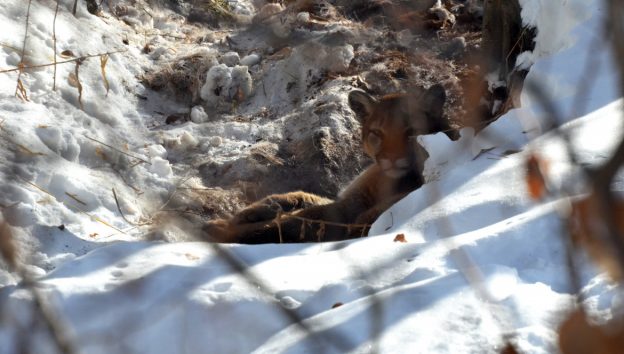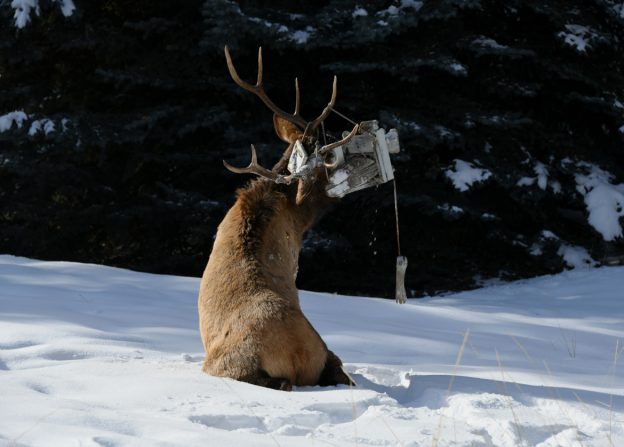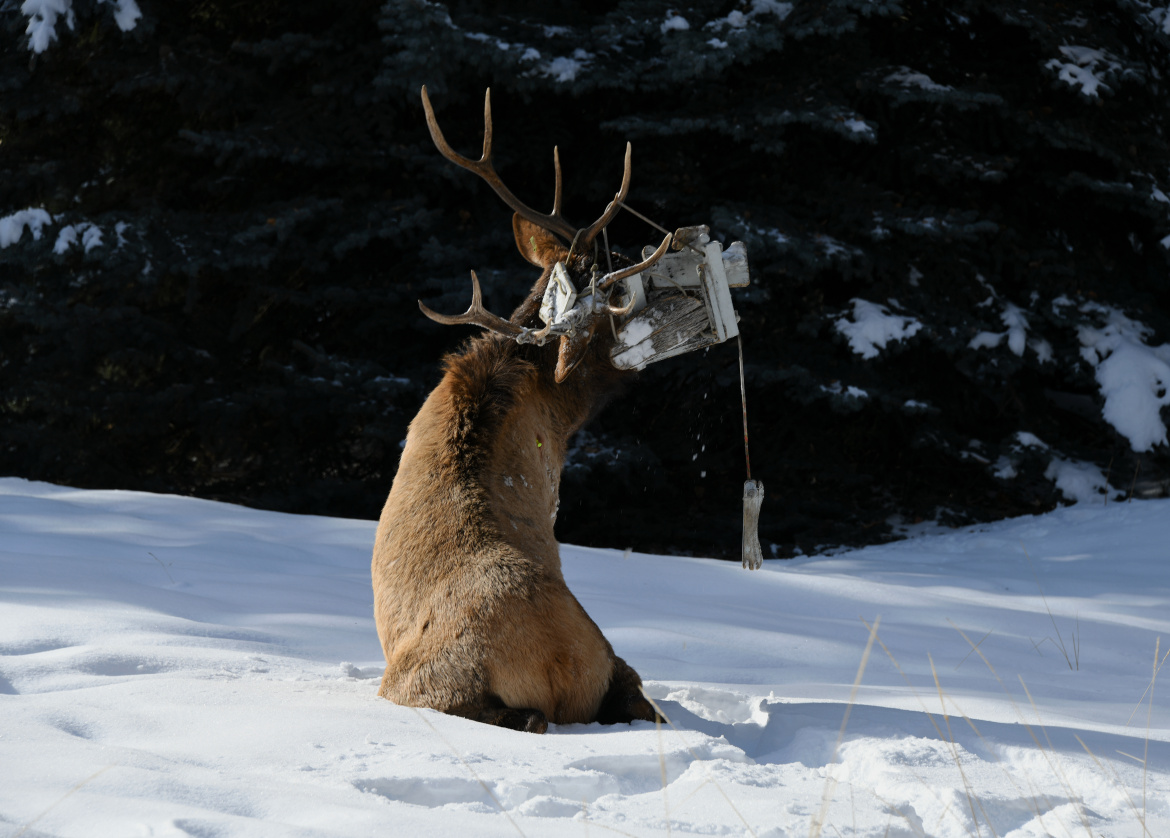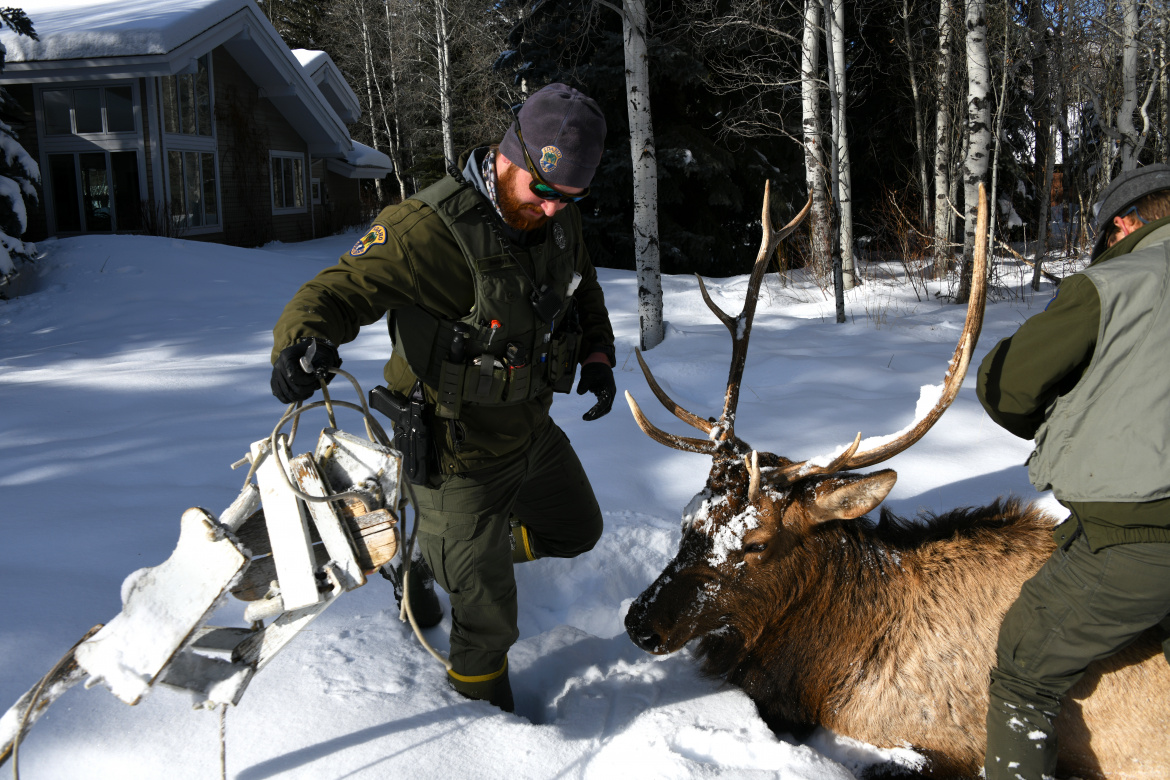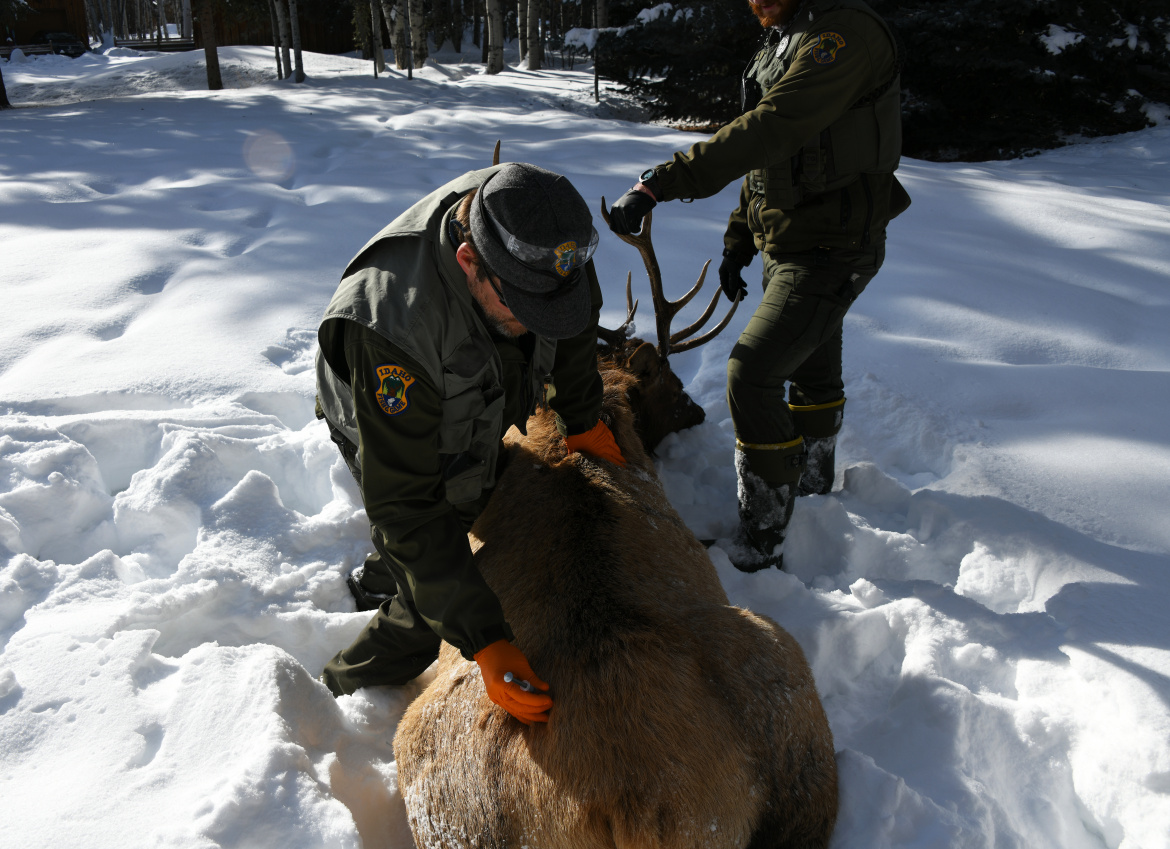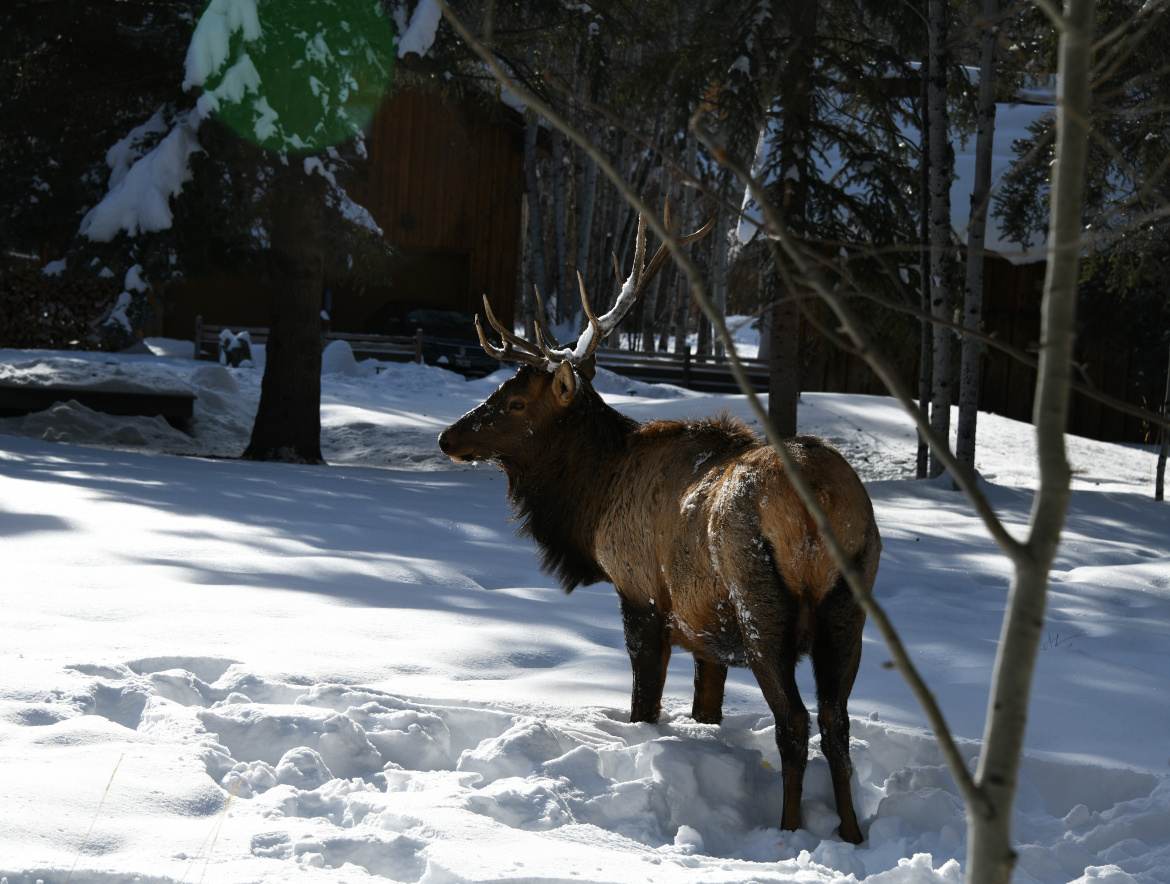By Terry Thompson, Regional Communications Manager
Wednesday, January 27, 2021 – 1:33 PM MST
Incidents of human/wildlife conflict with mountain lions have diminished in the Wood River Valley but sporadic reports of lions in residential areas continue to come into the Magic Valley Regional Office.
Reports of mountain lions in the Wood River Valley are down considerably from the winter of 2019-2020. Last year, Fish and Game reported nearly 100 incidents involving mountain lions in the Wood River Valley, which included several attacks on pets.
While reports have diminished this winter, mountain lions continue to live throughout the Wood River Valley. Fish and Game continues to receive reports, most of which involve lions moving through neighborhoods or sightings of lions in yards.
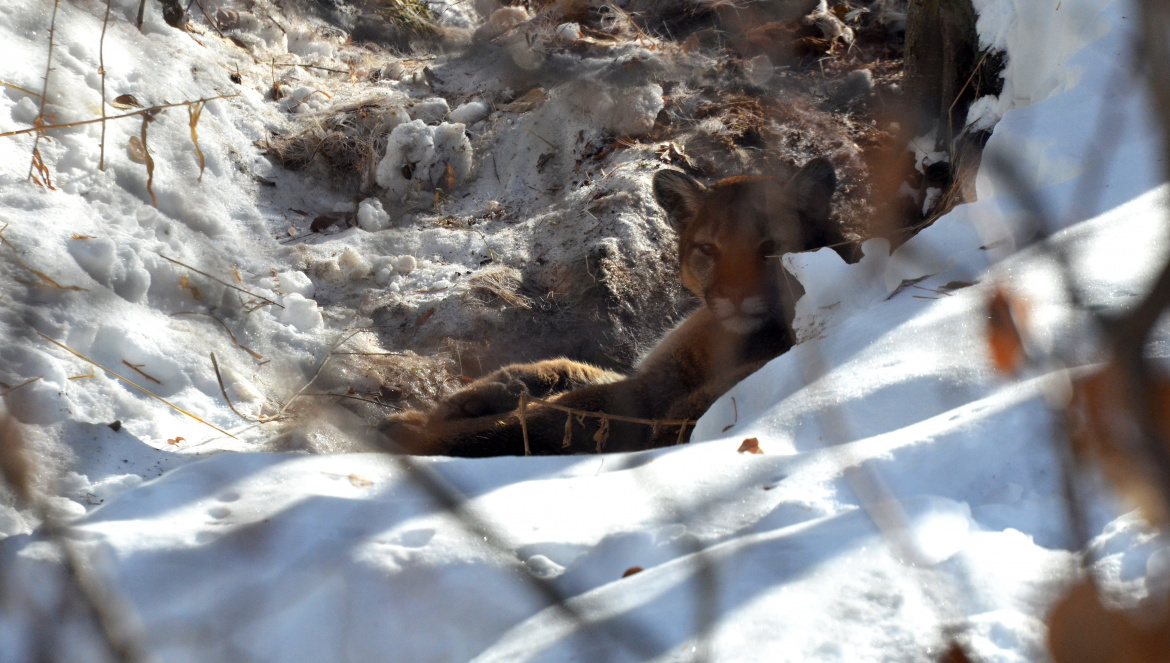 An adult male mountain lion in its day bed behind a Ketchum residence.
An adult male mountain lion in its day bed behind a Ketchum residence.
Since mid-January 2021 mountain lions have been observed in the Wood River Valley between Hailey and Bellevue, and a lion is suspected in killing a deer near homes in the Indian Creek area, north of Hailey.
Understandably, when reports increase, residents and visitors become concerned. Residents and visitors need to be vigilant and aware of their surroundings at all times.
Elk and deer populations are healthy in the Wood River Valley, and numbers grow during the winter months as wildlife moves into their traditional winter range. While we like to see wildlife where we live and recreate, these herds bring unintended consequences since they are prey for mountain lions.
To keep residents, visitors, pets, as well as wildlife safe, Fish and Game encourages everyone to follow these safety tips and suggestions when they live near mountain lion habitat.
Personal safety
Mountain lions have been in the Wood River Valley long before human development began. We hear from residents that they are seeing these secretive cats as they pass through their neighborhoods, with some seeing lions during daylight hours, which is not typical behavior.
Wildlife managers agree that if a person is in close proximity to a lion, meaning they see it, they should:
- NEVER run away from a mountain lion. The lion’s instinct is to chase and catch what they perceive as potential prey.
- NEVER turn your back on a lion. Always face them while making yourself look as large as you can. Yell loudly, but don’t scream. A high pitched scream may sound like a wounded animal.
- SLOWLY back away while maintaining eye contact with the lion.
- Safety equipment you may choose to carry could include bear spray, a noise device, like an air horn, and if you walk in the dark, a very bright flashlight.
- If you are attacked, fight back! You need all of your senses to detect if wildlife is near. Using a light to help you see is very important, both in your yard, or as you walk in your neighborhood. If you run or bike for personal fitness, use caution when wearing headphones or ear buds which can take away your ability to hear if a lion, or any other wildlife, is giving you signals that you’re too close.
Pet safety
Mountain lions are opportunistic predators, and will often attempt to take prey when it presents itself. A lion may perceive a pet as prey so pet owners are strongly encouraged to follow these safety tips:
- Keep your pets on a leash.
- Watch the pets’ behavior, since they may sense the lion before you can actually see them.
- Do not feed your pet outside, or leave their food dishes outside. Lions will not typically be attracted by the pet food, but the food could attract feral cats or wildlife like raccoons or skunks that could be considered prey by a lion.
- Before letting your pet outside, turn on lights, make noise and look to ensure the yard is clear of wildlife. Do not assume that a privacy fence will keep a mountain lion out of your yard.
- Accompany your pet outside if possible.
Homeowner safety
By nature, mountain lions are shy and will make every effort to avoid contact with humans. Over the last several months it does appear there are some lions that have become accustomed to living near Wood River Valley towns and neighborhoods. Homeowners can do several things to make it less likely that a mountain lion would pass through, or live near their homes and neighborhoods. These include:
- When leaving your house, be aware of your surroundings. Look and listen for signs of wildlife.
- Do not feed wildlife! Elk and deer are the preferred prey for mountain lions. Feeding is unnecessary and can concentrate elk and deer herds which can attract predators.
- Strongly encourage your neighbors to not feed elk and deer. To effectively keep predators out of neighborhoods everyone must do their part.
- Do not leave garbage outside and unsecured. Garbage will not typically attract a mountain lion, but it might attract other animals that would be considered prey.
- Ensure that a lion cannot crawl under your deck or into basement window wells which could be a perfect place for a daybed.
- Install motion-sensor lights which may discourage wildlife from staying in your yard. Lights can be directed to minimize light impact on your neighbors.
Reporting mountain lion sightings and encounters
Residents and visitors should immediately report any encounter that results in an attack to the Magic Valley Regional Office at (208) 324-4359 during business hours, 8 a.m. – 5 p.m. Monday – Friday.
Reports can also be made to your local law enforcement agency.
Mountain lion sightings and observations should be reported to the Fish and Game, Magic Valley Regional Office at (208) 324-4359.
